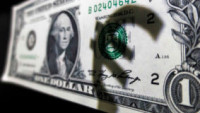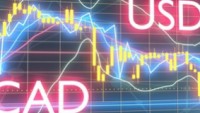 We saw a lacklustre start to the week yesterday European markets just about managing to eke out a small gain, although the FTSE100 finished the day slightly below the flat line, closing lower for the 7th day in a row.
We saw a lacklustre start to the week yesterday European markets just about managing to eke out a small gain, although the FTSE100 finished the day slightly below the flat line, closing lower for the 7th day in a row.
The retreat from the intraday highs appeared to be driven by a rise in yields with both UK and German yields seeing strong gains towards their highs of last week.
The move higher in yields also saw US 10-year and 30-year yields hit their highest levels since 2007, but unlike in Europe the rise in yields didn’t act as a brake on US markets, which managed solid gains led by the Nasdaq 100.
US chipmaker Nvidia was a notable outperformer looking to revisit its record highs of earlier this month ahead of its Q2 earnings which are due to be released tomorrow.
As we look ahead to today’s European open the strong finish in the US looks set to translate into a similarly positive start here in a couple of hours’ time, however it’s difficult to escape the feeling that stock markets are starting to look increasingly vulnerable.
Economic uncertainty in China, stagnation or weak growth in Europe and the UK, the only positives appear to be coming from the US where the economy is looking reasonably resilient, hence the rise in yields there. It’s slightly harder to explain why yields in the UK and Europe are rising aside from the fact that rates are likely to stay higher for longer.
On the economic data front the only data of note is the latest July public sector borrowing numbers for the UK, which are expected to see a fall to £3.9bn from £17.1bn in May. With total debt now at levels of 100% of GDP the rise in rates is extraordinarily painful given how much of its existing debt is linked to inflation and the retail price index. Having to pay out over £100bn a year in interest is money that might have been better spent elsewhere.
It’s just a pity that the government didn’t take greater advantage of the low-rate environment we saw less than 2 years ago, as had been suggested from a number of quarters at the time.
We also have the latest CBO industrial orders for August which are expected to slip back to -12 from -9 in July.
In the US we have July existing home sales which are expected to decline for the second month in a row, by -0.2%.
We also have comments from the following Federal Reserve policymakers. Chicago Fed President Austan Goolsbee who leans towards the dovish side will be speaking at an event on youth unemployment alongside the more hawkish Fed governor Michelle Bowman.
We also have Richmond Fed President Thomas Barkin whose most recent comments suggest he sees the prospect of a soft landing for the US economy, although he is not a voting member this year.
EUR/USD – finding support just above the 1.0830 area. Still feels range bound with resistance at the 1.1030 area. Below 1.0830 targets the 200-day SMA.
GBP/USD – continues to look supported while above the twin support areas at 1.2610/20. We need to see a move through the 1.2800 area, to signal potential towards 1.3000. A break below 1.2600 targets 1.2400.
EUR/GBP – continues to find support for now at the 0.8520/30 area. A move below 0.8500 could see 0.8480. Above the 100-day SMA at 0.8580 targets the 0.8720 area.
USD/JPY – looks to be retesting the August highs on the way towards the 147.50 area. Below the 144.80 area, targets a move back to the 143.10 area.












